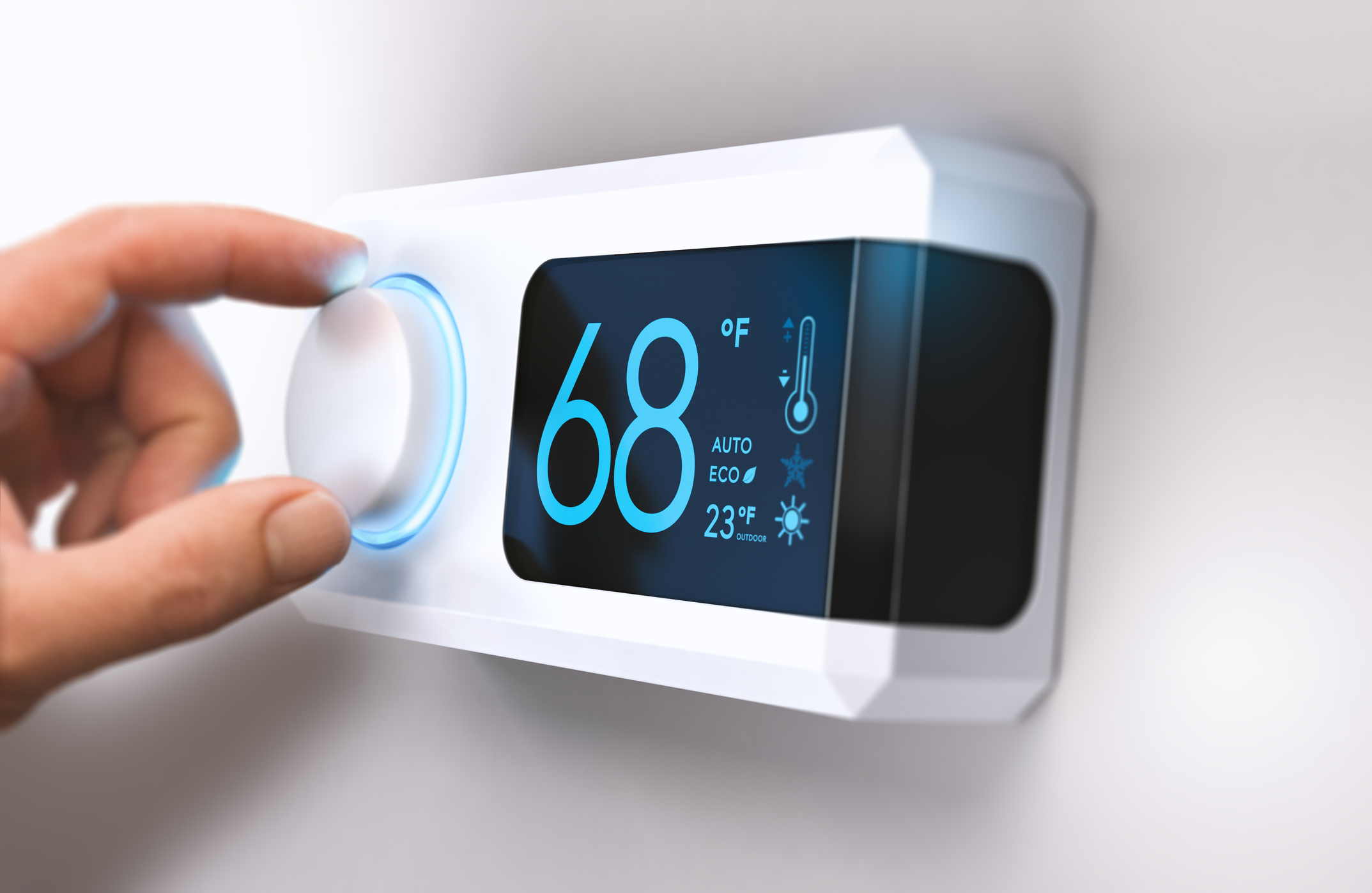Why Your Electric Bill Will Keep Climbing
There's no end in sight for energy rate hikes, so look for ways to curb your power use.

To help you understand what is going on in the economy, our highly experienced Kiplinger Letter team will keep you abreast of the latest developments and forecasts (Get a free issue of The Kiplinger Letter or subscribe). You'll get all the latest news first by subscribing, but we will publish many (but not all) of the forecasts a few days afterward online. Here’s the latest…
Your electric bills are no doubt up a lot. Unfortunately, we see no relief from that, as electricity demand rises to its highest pace in years, and state and federal officials push for a bigger role for renewable energy in the nation’s electric grid.
After roughly a decade of slow rate rises, electric prices have shot up since 2021. Households have seen a 24% increase from April 2021 to April 2024, a shock for many customers, and a contributor to inflation.
From just $107.88 $24.99 for Kiplinger Personal Finance
Become a smarter, better informed investor. Subscribe from just $107.88 $24.99, plus get up to 4 Special Issues

Sign up for Kiplinger’s Free Newsletters
Profit and prosper with the best of expert advice on investing, taxes, retirement, personal finance and more - straight to your e-mail.
Profit and prosper with the best of expert advice - straight to your e-mail.
Utilities are expecting a pickup in demand, especially due to new energy-hungry data centers. In 2022, they were forecasting electricity consumption to rise by 2.6% over the coming five years. But now, they are projecting 4.7% growth in the next five years.
Data centers whose chips run artificial intelligence are especially energy-intensive, and more are coming. Data centers, in general, account for 4.6% of demand. By 2026, that figure stands to rise to 6%. Meanwhile, more appliances and home systems are switching from natural gas to electricity, and more electric cars are plugging into the grid. Booming construction of chip plants and other high-tech manufacturing facilities is also lifting consumption. For instance, new Intel chip plants in Ohio are expected to tax the Midwest’s grid.
Rising demand is running into supply constraints
The switch to electricity generated from solar panels and wind turbines requires a lot more transmission lines and other infrastructure to connect than conventional, centrally located power plants. Sunshine and wind are free, but the panels, turbines, copper wires and transformers needed to harness them are expensive. Plus, their intermittent generation patterns require some form of backup power. (Round-the-clock power sources like geothermal and nuclear are increasingly prized by data center owners that want stable supplies.)
What this all adds up to is higher rates on your future electricity bills, unfortunately. How much higher depends on a lot of factors, such as your region, the price of natural gas (the leading fuel source for generation) and how quickly government officials try to ramp up renewable power. But to be safe, we recommend that you plan on your recent rate increases continuing for the next few years.
What you can do to save on energy bills
Consider efficiency upgrades where feasible. What exactly that means depends on your home or business’s energy needs, which you know best. But we advise taking a fresh look at any efficiency or conservation ideas. Investments that weren’t cost-effective when power rates were lower may make financial sense now. Homeowners, consider an energy audit to help find the best savings, such as tips on insulation. Note that such audits can qualify for a $150 home improvement tax credit. Also, it may pay to switch from an electric appliance or system to gas, if you have access to cheap natural gas and the cost of installing gas lines is bearable.
This forecast first appeared in The Kiplinger Letter, which has been running since 1923 and is a collection of concise weekly forecasts on business and economic trends, as well as what to expect from Washington, to help you understand what’s coming up to make the most of your investments and your money. Subscribe to The Kiplinger Letter.
Profit and prosper with the best of Kiplinger's advice on investing, taxes, retirement, personal finance and much more. Delivered daily. Enter your email in the box and click Sign Me Up.

Jim joined Kiplinger in December 2010, covering energy and commodities markets, autos, environment and sports business for The Kiplinger Letter. He is now the managing editor of The Kiplinger Letter and The Kiplinger Tax Letter. He also frequently appears on radio and podcasts to discuss the outlook for gasoline prices and new car technologies. Prior to joining Kiplinger, he covered federal grant funding and congressional appropriations for Thompson Publishing Group, writing for a range of print and online publications. He holds a BA in history from the University of Rochester.
-
 How We Manage Our Finances Together: 'When You Keep Score, You Can End Up Resentful'
How We Manage Our Finances Together: 'When You Keep Score, You Can End Up Resentful'Douglas Boneparth, a certified financial planner, and his wife, Heather Boneparth, speak with Kiplinger about couples managing finances.
-
 I'm 45 and I've barely invested in the stock market. I recently inherited $50,000. What should I do?
I'm 45 and I've barely invested in the stock market. I recently inherited $50,000. What should I do?What should you do with a big inheritance? We asked a financial expert for advice.
-
 A Contrarian Approach Pays Off for This Bond Fund
A Contrarian Approach Pays Off for This Bond FundThe Dodge & Cox Income Fund has outperformed in 2025 thanks to its managers' fearless approach.
-
 Special Report: The Future of American Politics
Special Report: The Future of American PoliticsThe Kiplinger Letter The Political Trends and Challenges that Will Define the Next Decade
-
 What to Expect from the Global Economy in 2026
What to Expect from the Global Economy in 2026The Kiplinger Letter Economic growth across the globe will be highly uneven, with some major economies accelerating while others hit the brakes.
-
 Shoppers Hit the Brakes on EV Purchases After Tax Credits Expire
Shoppers Hit the Brakes on EV Purchases After Tax Credits ExpireThe Letter Electric cars are here to stay, but they'll have to compete harder to get shoppers interested without the federal tax credit.
-
 The Economy on a Knife's Edge
The Economy on a Knife's EdgeThe Letter GDP is growing, but employers have all but stopped hiring as they watch how the trade war plays out.
-
 Banks Are Sounding the Alarm About Stablecoins
Banks Are Sounding the Alarm About StablecoinsThe Kiplinger Letter The banking industry says stablecoins could have a negative impact on lending.
-
 Japan Enters a New Era of Risk and Reform
Japan Enters a New Era of Risk and ReformThe Kiplinger Letter Japan has entered a pivotal moment in its economic history, undertaking ambitious policy and structural reforms to escape from decades of stagnation.
-
 After Years of Stagnant Growth, Hope Emerges for EU Economy
After Years of Stagnant Growth, Hope Emerges for EU EconomyThe Kiplinger Letter Can a German fiscal push outweigh French political peril?
-
 Trump's Economic Intervention
Trump's Economic InterventionThe Kiplinger Letter What to Make of Washington's Increasingly Hands-On Approach to Big Business

